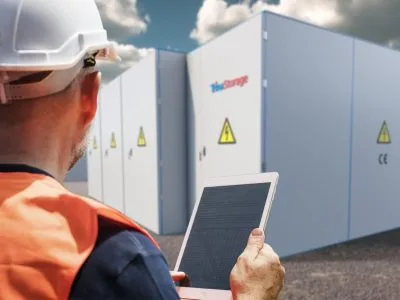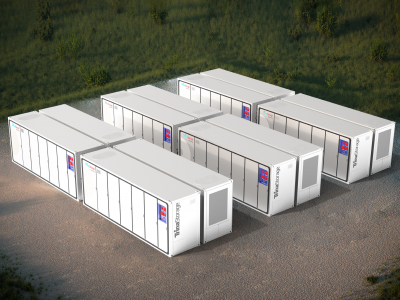Feature Article: What Renewables Really Need Is Not New Technologies In Energy Storage
The argument going around now is that energy storage is the only solution for balancing the grid and renewables. Without breakthrough technologies, the prospect of renewables looks thin. Yet the truth may just be that we do not need new innovations in energy storage to enjoy deeper renewable penetration in the grid.
There is a growing camp of people who believe that the problem of intermittent renewables is exaggerated, and there exists a wide range of already available solutions; the problems have been rhetoric fed to the media to serve the interests of utilities, innovators and investors.
Problem overstated?
An NREL study proposed that simply better employment of existing dispatchable power and storage technologies could lead the US into 50% penetration of wind and solar up from the present dismal 5% and still keep the grid balanced. Intermittency, while a valid concern, can be smoothed out between wind and solar if coordinated across a sufficiently wide range of generation facilities. This is because solar is able to fill the gap in the day caused by wind that peaks around dawn and dusk. A Citi report depicts how wind and solar work to smooth out each other’s intermittency.
Other believe that existing battery technologies like lithium-ion, and lead-acid, products that have been around for decades, especially when matched with smart controls, are tried-and-tested approaches.
What this seems to suggest then is that the industry may simply need better management and effective policies rather than increased funding for technologies.
Removing barriers to entry
In the past week, SunEdison announced the acquisition of startup firm SolarGrid. Last year, Xtreme Power, in the business of building battery facilities beside wind and solar ones, filed for bankruptcy after 8 years in operation and was swiftly acquired by Younicos, a Berlin-based grid battery startup.
Although attention is shifting to the energy storage industry quickly, the truth is that the price of most energy storage technologies still remains far too high to be economically viable, which explains why companies like Xtreme Power and SolarGrid were unable to survive in the competition.
The market, aided by better policies that will facilitate the environment is the best way to bring down costs. This could come in the form of the removal of regulatory barriers.
This is a sentiment encouraged by Professor Michael Sterner, from the Technical University of Regensburg regarded as an expert on energy storage, who noted that there needs to be recognition at the regulatory level of how renewables, energy storage and related technologies can help the power-generation industry shift from “centralised energy networks towards a localised, lower emissions-based infrastructure”.
Experts cite the example of California, where such policies are already in effect to help such technologies hit mass markets. The scaling up of deployment has lowered the price of some batteries in California to US$150 per kWh, as compared to a similar one in Europe for almost US $1000 per kWh.
It was a big cheer for many when the Federal Energy Regulatory Commission (FERC) recently removed unfair market barriers preventing grid flexibility that was necessary to incorporate high levels of wind and solar energy.
Regulation
The key problem is that existing rules that govern the energy market have been designed around a generation portfolio of traditional fossil fuel sources like coal and oil. These rules do not also incorporate the operational characteristics of the growing resources of wind and solar. Consequently, it is extremely difficult for renewables to compete with grid services.
Hence, a regulatory framework should be put in place in countries to create a level playing field for storage against other sources of generation, by directly addressing barriers preventing the integration of storage into the supply chain.
Also, the regulatory model for grid services have been based on the notion of providing service universally and at rates that are non-discriminatory. In Hawaii, regulators and utilities are currently negotiating a comprehensive reform plan to guide the adoption of distributed energy under “regulation 2.0”, according to Michael Champley, commissioner at the Hawaiian Public Utilities Commission. This will be a point covered by fellow commissioner from the Hawaiian Public Utilities Commission, Lorraine H. Akiba, at the Energy Storage World Forum in Rome from 27-30April 2015.
The future grid will need flexibility from utilities to provide customers varying levels of power quality at differentiated pricing.
Collaboration
The Clean Energy Group (CEG) is one of the key voices calling for more collaboration on policies to promote emerging distributed energy storage technologies. In a news report released in February 2015, it proposed the setting up of international and national networks of industry, policy makers and NGOs to advance such policies.
In another DG ENER report by the EU, it stressed that “electricity storage will make business sense only if it address this multitude of problems and is integrated in a holistic way with the whole energy system across national borders.”
While energy storage technologies have long arrived, markets and financing, regulations and policies urgently needed to support these technologies have not.
The time is now ripe more than ever for policy development and collaboration on the best policy decisions that will allow the technologies to scale. They have lagged behind emerging technologies for far too long.
—
Join in our discussion at our Energy Storage World Forum LinkedIn group.
If you want to know more about this and other topics directly from end users of energy storage technologies join us at one of these annual events: The Energy Storage World Forum (Grid Scale Applications), or The Residential Energy Storage Forum, or one of our Training Courses.



